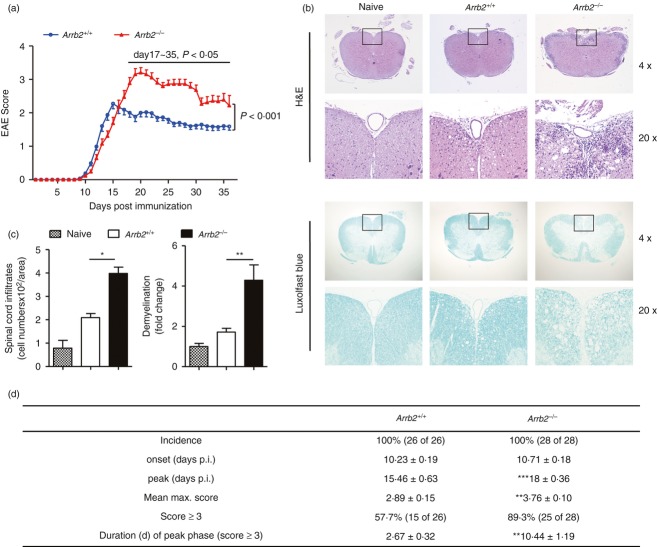Figure 1.
Arrb2−/− mice develop a more severe course of experimental autoimmune encephalomyelitis (EAE). Arrb2+/+ and Arrb2−/− mice on the C57BL/6 background were immunized with MOG35–55 peptide. (a) Clinical scores for Arrb2+/+ (blue circles; n = 26) and Arrb2−/− mice (red triangles; n = 28), 35 days post immunization. Data are expressed as mean EAE score ± SEM. Two-way analyses of variance were applied to compare the entire course of EAE development of both genotypes, followed by Mann–Whitney U-test to assess the significance of difference for individual day. (b) Haematoxylin & eosin (H&E) and Luxol fast blue staining of paraffin sections of spinal cords isolated from naive as well as EAE-affected Arrb2+/+ and Arrb2−/− mice on day 25 after immunization (upper panels, original magnification × 4; lower panels, original magnification × 20, enlarged images of boxed areas outlined in upper panel). (c) Quantitative analyses of the spinal cord leucocyte infiltrates and amount of demyelination presented in (b). Data are represented as means ± SEM. Three animals from each group were killed and five sections of the spinal cord of each animal were analysed. (d) Features of MOG35–55-induced EAE in Arrb2+/+ and Arrb2−/− mice. p.i., post-induction. Data are cumulative results from five independent experiments. *P < 0·05; **P < 0·01, versus wild-type control (two-tailed Student's t-test).

